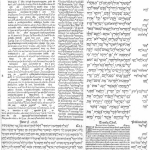I recently got to live out a childhood dream. My best friend sent me to the South Salem Wolf Conservation Center, where I got up close and personal with Canis lupus (and sort of far-off and WASPily reticent with Canis rufus). We heard tales of wolves battling for dominance (and super losing–the wolf who had failed to become alpha was still skulking around in the back, and didn’t get to eat his venison sausages until the alpha and his sister had got theirs), wolves peeing on TV sets, wolves walking through Manhattan on a leash and failing to rattle jaded New Yorkers. We saw a wolf delicately eat an egg, leaving the shell. We heard them howl in broad daylight and I suspect we all shivered.
But we were not afraid! Not because they’re cute–wolves are powerful creatures, they can bite through your thigh bone!, and that lithe muscled alpha wolf was definitely licking his chops at us as he paced behind his fence. But wolves don’t attack people unless they’re desperate, and the basic reason is that we are what they fear most. We are the apex predator (we even eat the ozone layer!) and while man is wolf to man, man is also, absolutely, wolf to wolves.
On that note…
Corpse Bride: This was fun! Too much of the wispy wafting hero and heroine who don’t have any personality at all, and the whole “Your cup will never be empty, for I will be your wine” faux Eucharist marriage-idolatry struck me as flatly blasphemous. But Tim Burton’s gleefully gothy, childishly ooky totentanz aesthetic is at its peak here, and genuinely delightful. A cute little Halloween cupcake.
Last Shift: Endearing rookie cop is supposed to spend her first night on the job monitoring the cleanup and closeout of the old police station. But when the strange noises start, and the inexplicable phone calls, she starts to wonder if the local cult who killed her father (also a cop) has come back for more. Or maybe, come back from the dead….
This was very effective while I was watching, and Juliana Harkavy is lovely as our rookie. But I saw this after reading The Deadly Doll’s review, and I agree with her that we never get quite enough of the cult. We get hints, and they’re creepy hints, but I would like more cult and much less cliche whiteface makeup and crowded pointy teeth. Also, man, someday they’ll watch this movie as an example of how much American cinema took police violence for granted. Our sympathetic, audience-identification cop heroine threatens a homeless, mentally ill man, then throws him out into the street shoeless, then later roughs him up and iirc tases him. That worked for me as a script choice, in the same way that Kima getting in on a beatdown on the first episode of The Wire worked, but she’s callous and cruel to a guy who at that moment is acting like a sad sick person.
Ab-Normal Beauty: A Hong Kong/Thai joint about an art-school student who becomes obsessed with photographing death. This was all over the place, and it almost all worked for me. It’s a movie with a fairly clear moral, and that moral is: Brutal art is evil, and pretty art is good. This from a movie which borders on torture porn toward the end! It should be simplistic, even saccharine, and disingenuous… but it’s (almost) all done so well that I don’t care.
The direction by Oxide Chun Pang is so hot, so aggressive in its lighting and cutting. There’s a sequence where the art student is taking photos of the moments before a death, and we realize what has happened by the movement of her camera’s muzzle. There’s great use of the space outside the frame. There’s great use of color. Race Wong sells our complex, haunted main character, while Rosanne Wong is delightful as her soft-butch girlfriend.
The climax does go too far toward torture porn for me, in its lingering depictions of sexualized violence, but maybe that makes sense given the point it’s making. And the film creates terrific tension around one of the central questions of horror: Should you kill the monster or love the monster? If you like films that attack their audience, or hot highly-stylized direction, you might find this pretty enthralling. The one definite criticism I’ll make is that there’s too much backstory. Maybe people don’t have reasons for what they do! Have you ever considered that, contemporary horror filmmakers?
Gillian Cross, The Dark Behind the Curtain. This is a children’s book from 1982 about an elementary-school production of a play about Sweeney Todd (! welcome to the time before parental consent forms, my friends), in which Victorian ghosts begin to invade the theater–and the actors’ souls. I revisited it recently, having forgotten why I had such fond feelings toward it, and it was excellent.
I can recommend it to all of you on the grounds that it captures the anger and hostility of children. These kids are so constantly awful to one another, and so resentful toward adults, and yet the two main characters are still so endearing. Cross does a great job of showing you their grudging respect for one another, their tense and mistrustful attempts at friendship. Theater nerds will love it. The prose is transparent but not childish. I will say that one of the characters starts out as one of those painful children’s-book comedy fat characters. This turns out to be misdirection, and her role is complex and significant, but even as misdirection it’s clumsily-written (I think at one point she even speaks in a fat voice!) and it was the only aspect of the book I found unpleasant to read.
On a more personal note–when the book starts, our hero, Colin Jackus, is on the outs with basically everybody because he got caught stealing at school. Not everyone knows exactly what happened, but he’s mistrusted; he deserves it, and he knows it. His feelings of guilt and resentful alienation, the way he casts around for self-justifications and can’t quite find any, were things I know I intensely related to when I read this as a child. And his underlying decency and loyalty were consoling to me: Maybe you’re like that part of him too. That feeling of having done something wrong, for which you bear actual personal guilt, before the story even starts–well, I guess you can see why I found the doctrine of Original Sin a relief.
In the book’s denouement (ah, spoilers for a 1982 children’s novel?) Jackus is basically vindicated, and the novel’s primary villain actually repents and wants to make amends. And Jackus won’t let him. It’s a fairly shocking choice for freedom over forgiveness. It leaves the villain with the same unresolved and unbearable guilt Jackus carried for most of the novel. It’s totally understandable in context, it doesn’t even speak poorly of Jackus; and yet it may be the darkest moment in a book about the murderous ghosts of starving children.











